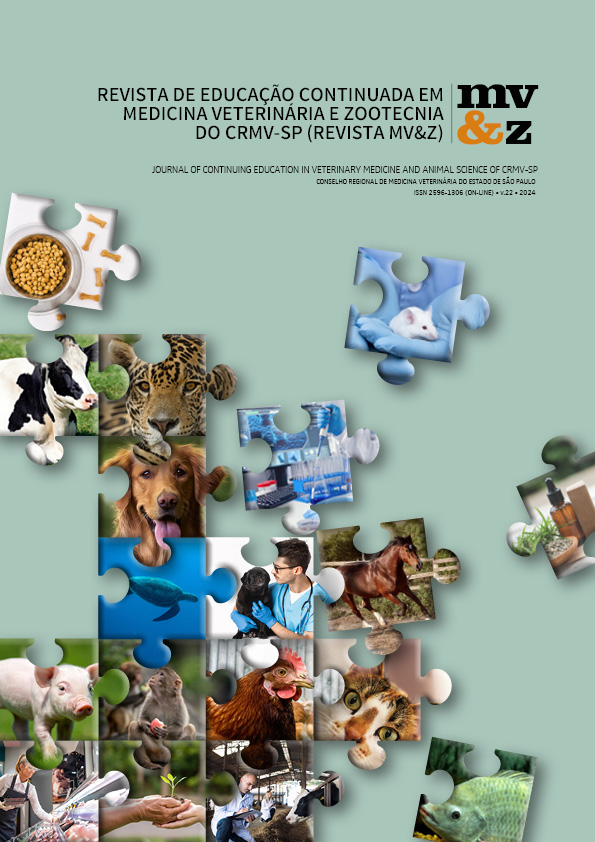Use of oclacitinib in the treatment of canine pemphigus foliaceus: case report
Main Article Content
Abstract
Pemphigus foliaceus is a common autoimmune skin disease frequently encountered in clinical routine of dogs and cats. It is a pustular dermatosis caused by the disruption of desmosomal adhesions between keratinocytes. Pemphigus presents with a primary skin lesion known as a subcorneal pustule. Diagnosis is based on the association of the clinical presentation and histopathological confirmation, identifying the presence of subcorneal acantholysis. A 10-year-old female Labrador Retriever was referred for specialized veterinary dermatology care due to intense pruritus lasting 11 months, with no prior medical history. On physical examination, erythema was observed in both ear canals, along with a predominance of crusted and pustular lesions. These lesions were bilaterally and symmetrically distributed across the thoracic region, thoracic and pelvic limbs, ear pinna, periocular region and nasal bridge. A biopsy of the lesions confirmed the diagnosis of pemphigus foliaceus. As a form of treatment, the use of oclacitinib was instituted at an initially high dose (1mg/kg, BID), which is a Janus kinase (JAK) inhibitor approved to treat atopic dermatitis (AD) in dogs, which acts as an inhibitor of function of important pro-inflammatory and pruridogenic cytokines through inhibition of the Janus kinase (JAK) signal transducer and the activator of transcription (STAT) signaling pathway. The patient demonstrated significant clinical improvement without adverse effects, and her laboratory tests remained stable throughout the treatment.
Article Details
1. Autores mantém os direitos autorais e concedem à revista o direito de primeira publicação, com o trabalho licenciado sob a Creative Commons Atribuição-NãoComercial-SemDerivações 4.0 Internacional
2. Autores têm autorização para assumir contratos adicionais separadamente, para distribuição não-exclusica da versão do trabalho publicada nesta revista (ex.: publicar em repositório institucional ou como capítulo de livro), com reconhecimento de autoria e publicação inicial nesta revista.
3. Autores têm permissão e são estimulados a publicar e distribuir seu trabalho online (ex.: em repositórios instituicionais ou na sua página pessoal) a qualquer ponto antes ou durante o processo editorial, já que isso pode gerar alterações produtivas, bem como aumentar o impacto e a citação do trabalho publicado (Veja O Efeito do Acesso Livre);
